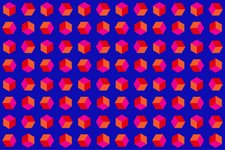Sublime
An inspiration engine for ideas
Brunelleschi’s successor as a theorist of linear perspective was another of the towering Renaissance polymaths, Leon Battista Alberti (1404 –1472), who refined many of Brunelleschi’s experiments and extended his discoveries about perspective. An artist, architect, engineer, and writer, Alberti was like Leonardo in many ways: both were illegitimate
... See moreWalter Isaacson • Leonardo da Vinci
Marcus Vitruvius Pollio, born around 80 BC, served in the Roman army under Caesar and specialized in the design and construction of artillery machines. His duties took him to what are now Spain and France and as far away as North Africa. Vitruvius later became an architect and worked on a temple, no longer in existence, in the town of Fano in Italy
... See moreWalter Isaacson • Leonardo da Vinci
Webdesign as architecture
www--arc.comLéonard conserve néanmoins un intérêt marqué pour la construction d’églises, et il dessinera plus de 70 autres superbes dômes et plans idéalisés d’intérieurs d’églises tout en étudiant les transformations des formes géométriques et la problématique de la quadrature du cercle.
Walter Isaacson • Léonard de Vinci: La biographie (QUANTO) (French Edition)
Ben Barry
benbarry.com
The Italian Renaissance was producing artist-engineer-architects who straddled disciplines, in the tradition of Brunelleschi and Alberti, and the tiburio project gave Leonardo the opportunity to work with two of the best: Donato Bramante and Francesco di Giorgio. They became his close friends, and their collaboration produced some interesting churc
... See moreWalter Isaacson • Leonardo da Vinci
Alberti was a major influence nonetheless. Leonardo studied his treatises and consciously tried to emulate both his writing and his demeanor. Alberti had established himself as “an avatar of grace in every word or movement,” a style that very much appealed to Leonardo. “One must apply the greatest artistry in three things,” Alberti wrote, “walking
... See moreWalter Isaacson • Leonardo da Vinci
What made Vitruvius’s work appealing to Leonardo and Francesco was that it gave concrete expression to an analogy that went back to Plato and the ancients, one that had become a defining metaphor of Renaissance humanism: the relationship between the microcosm of man and the macrocosm of the earth. This analogy was a foundation for the treatise that
... See more








